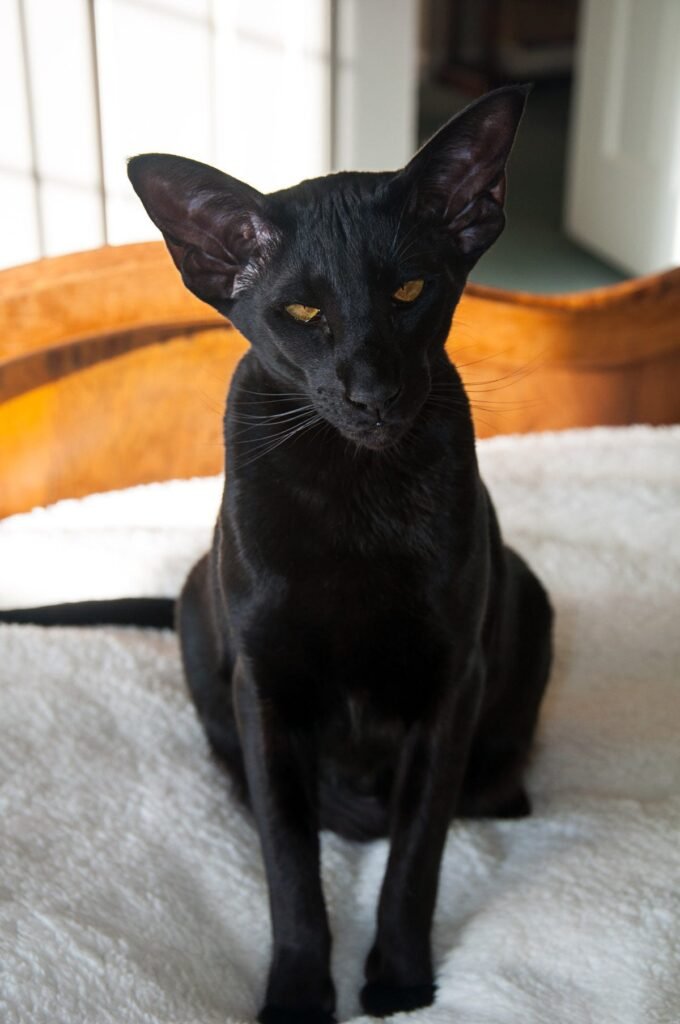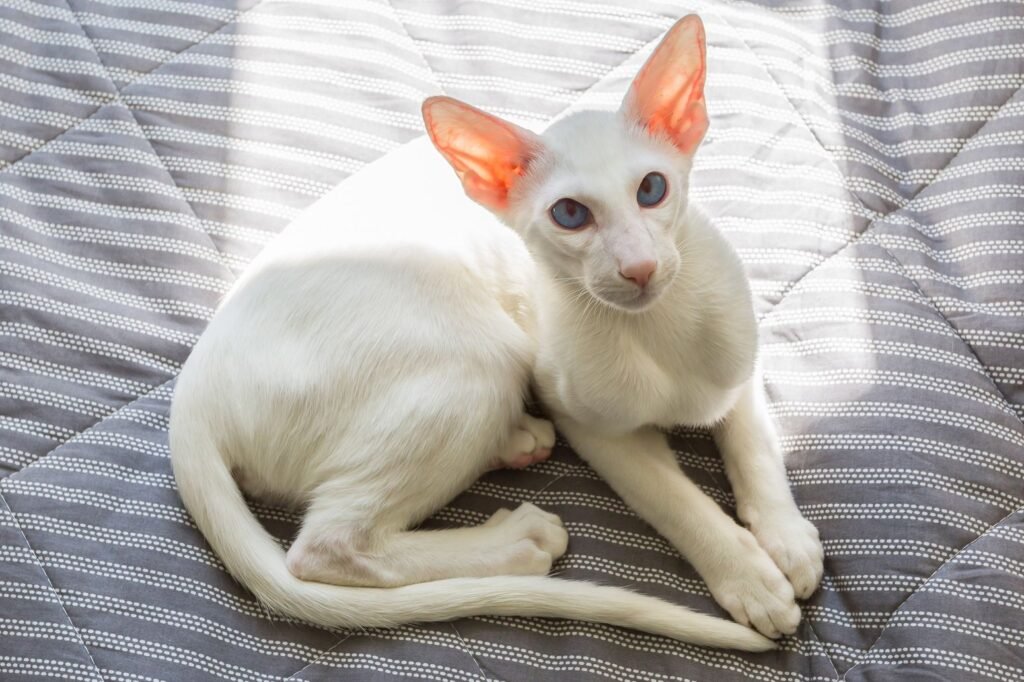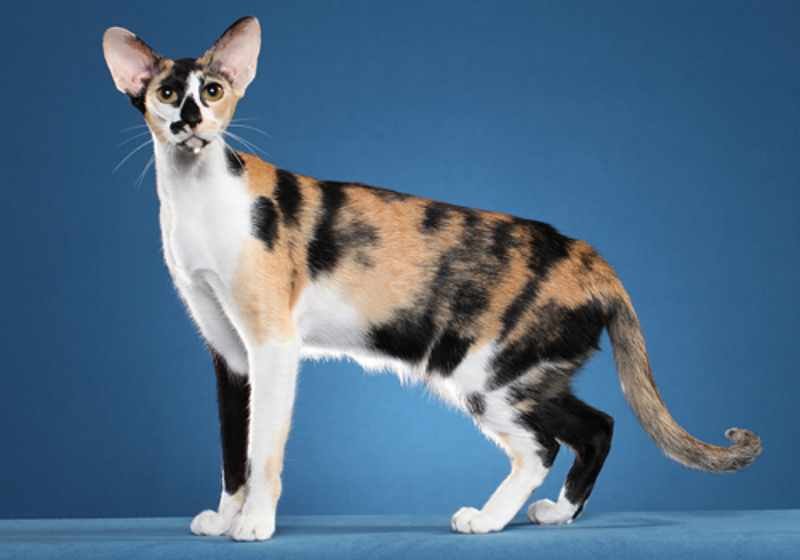Oriental Shorthair
Welcoming an Oriental Shorthair into your home can be a rewarding experience, but it requires careful consideration and preparation. One of the first steps is to select a reputable breeder. It is crucial to find a breeder who is well-versed in the breed’s characteristics, health issues, and temperament. A responsible breeder will provide health certifications, socialization practices, and be willing to answer any questions you may have. Additionally, consider visiting different breeders to assess the living conditions and the overall health of the kittens.

Understanding the specific needs of the Oriental Shorthair is paramount. This breed is known for its playful and social nature, which means they thrive in an engaging environment. Ensure your home is equipped with plenty of toys, scratching posts, and climbing structures. Oriental Shorthairs are also highly intelligent and may require mental stimulation through puzzle toys or interactive playtime. Furthermore, consider your lifestyle and whether you can devote sufficient time to nurture their social and emotional needs.
Preparing your living space for a new feline companion is another important aspect. Create a designated area where your Oriental Shorthair can feel safe and secure. Include a cozy bed, food and water bowls, and a litter box. It may also be helpful to establish a routine, as cats generally feel more comfortable with predictable schedules.
When introducing your new Oriental Shorthair to other pets or family members, patience is vital. Allow your new cat to explore their environment gradually, while keeping initial interactions supervised. This will help minimize stress for all pets involved. Gradual introductions can foster a harmonious household and allow your Oriental Shorthair to integrate smoothly into your family dynamic. This thoughtful approach will promote a peaceful coexistence and a loving bond with your new feline friend.
Overall, the Oriental Shorthair’s unique personality traits culminate in a breed that is affectionate, vocal, and eager to interact. Potential owners of this breed can expect a lively and engaging companion that values social interaction, providing endless entertainment and warmth to their homes.

Personality
The Oriental Shorthair is renowned for its vibrant personality, which sets it apart from other cat breeds. These cats are characterized by their playful and affectionate nature, making them exceptional companions for families and individuals alike. Their social disposition often leads them to seek interaction with their human counterparts as well as with other pets, creating a lively household atmosphere. The Oriental Shorthair has a strong bond with its owners, displaying loyalty and companionship that many cat lovers cherish.
One significant aspect of the Oriental Shorthair’s personality is its vocalization. Unlike many quieter cat breeds, the Oriental Shorthair is known for its expressive and communicative nature. They tend to meow frequently, using a variety of sounds to convey their needs and desires. This vocal trait can be endearing to attentive owners and serves to highlight their intelligence and emotional depth. The breed thrives in environments where they can engage socially, making them less suitable for households where they will be left alone for long periods.
In terms of intelligence, the Oriental Shorthair is remarkable. They are quick learners and can easily master new tricks or commands when adequately motivated. This intelligence reflects their curiosity and desire for stimulation. It is advisable to provide them with interactive toys, puzzles, or training exercises that challenge their minds and keep them entertained. Additionally, their playful demeanor often results in a fondness for games involving physical activity, such as fetching or chasing after toys, further exhibiting their high energy levels.
Origins
The Oriental Shorthair cat, known for its striking appearance and vibrant personality, has a rich history deeply intertwined with the Siamese cat. The breed’s journey began in the mid-20th century, when breeders sought to expand the color palette of the Siamese lineage. This ambitious endeavor led to the development of the Oriental Shorthair, showcasing a variety of colors and patterns that set it apart from its Siamese relatives. The efforts of pioneering breeders were instrumental in establishing this distinctive breed.

The genetic foundation of the Oriental Shorthair is rooted in the Siamese breed; however, the inclusion of other breeds has introduced a remarkable diversity. This genetic mixing allowed for the emergence of coats displaying a wide range of shades and designs, escalating beyond the traditional colors associated with Siamese cats. Consequently, Oriental Shorthairs may exhibit solid colors, tabby patterns, and even bicolor coats, underlining the breed’s versatility and appeal. The fascinating spectrum of colors includes everything from vivid greens to striking browns, making each cat unique.
As breeders continued experimenting with genetics, they focused on refining the breed’s physical characteristics and temperament. The Oriental Shorthair is renowned for its sleek, muscular build and elongated, elegant form. Its large ears and almond-shaped eyes are hallmark features that contribute to its striking appearance, decisively linking it to the Siamese heritage. Moreover, this breed’s spirited nature, marked by a playful and affectionate disposition, has endeared it to cat lovers worldwide.
Through the passionate efforts of breeders and advocates within the cat fancy community, the Oriental Shorthair has solidified its status and charm. Today, it remains one of the most sought-after breeds, captivating the hearts of many with its captivating beauty and engaging personality, continuing to thrive in various feline circles.
Care of the Oriental Shorthair cat
Maintaining the health and well-being of your Oriental Shorthair cat requires attention to various aspects of care. Grooming is an essential part of their maintenance routine. Due to their short, fine coats, they do not require extensive grooming as some long-haired breeds do. However, regular brushing, ideally once a week, will help reduce shedding and keep their coat in excellent condition. This grooming routine can also serve as a bonding activity, strengthening the relationship between you and your feline companion.
The dietary needs of an Oriental Shorthair are crucial for their overall health. It is recommended to provide high-quality cat food that is rich in proteins and meets their nutritional requirements. Canned food is often favored over dry kibble because it contains moisture that is beneficial for their urinary tract health. Be attentive to their feeding schedule, and provide smaller, more frequent meals rather than one or two larger servings to prevent obesity. Ensuring access to fresh, clean water at all times is equally important.
Oriental Shorthairs are generally healthy but can be prone to specific health issues, such as dental disease, obesity, and certain genetic disorders. Regular veterinary check-ups are vital for early detection and intervention. During these visits, your veterinarian can also provide necessary vaccinations and discuss preventative health measures tailored to your cat’s individual needs.
Mental stimulation and exercise play essential roles in keeping your Oriental Shorthair happy and healthy. Engage them with interactive toys or puzzle feeders that challenge their intellect and encourage natural hunting behaviors. Regular playtime not only aids in physical fitness but also alleviates boredom, as this breed is known for its playful and social nature. Maintaining an enriching environment will significantly contribute to your cat’s overall well-being.
Health
The Oriental Shorthair’s health is generally robust, but they are prone to genetic conditions like hypertrophic cardiomyopathy (HCM) and respiratory issues due to their slender build. Maintaining a high-protein diet, regular vet checkups, and dental care is essential for their well-being. Their short coat requires minimal grooming, but their active nature demands mental and physical stimulation. Proper care ensures a healthy, long lifespan of 12-15 years.
Nutrition
The Oriental Shorthair cat thrives on a high-protein, well-balanced diet rich in quality animal-based proteins. Due to their slim, muscular build and high energy levels, they require nutrient-dense meals with essential fatty acids, vitamins, and taurine. Avoid fillers and excessive carbs to maintain their lean physique and prevent obesity. Wet food or a raw diet can support hydration and digestion. Ensure fresh water is always available. Consult a vet for personalized feeding recommendations.
Cleanliness
The Oriental Shorthair is a low-maintenance cat breed known for its sleek, short coat that requires minimal grooming. This breed is naturally clean, shedding less than long-haired cats, making it ideal for allergy sufferers. Regular brushing helps reduce loose hair, and occasional ear cleaning is recommended. Their fastidious grooming habits keep them tidy, making them an excellent choice for owners seeking a clean and low-shedding feline companion.
Best cat breeds for kids
The Oriental Shorthair is an affectionate, playful, and intelligent cat breed, making it a great choice for families with children. With their social nature and high energy levels, they love interactive play and bonding with kids. Their short, low-maintenance coat and strong attachment to their human family make them an ideal pet. If you’re looking for a friendly and talkative feline companion, the Oriental Shorthair is a perfect match!
People who have seen this breed have also visited…
In this section you can find completely detailed information about the breed of your cat.
